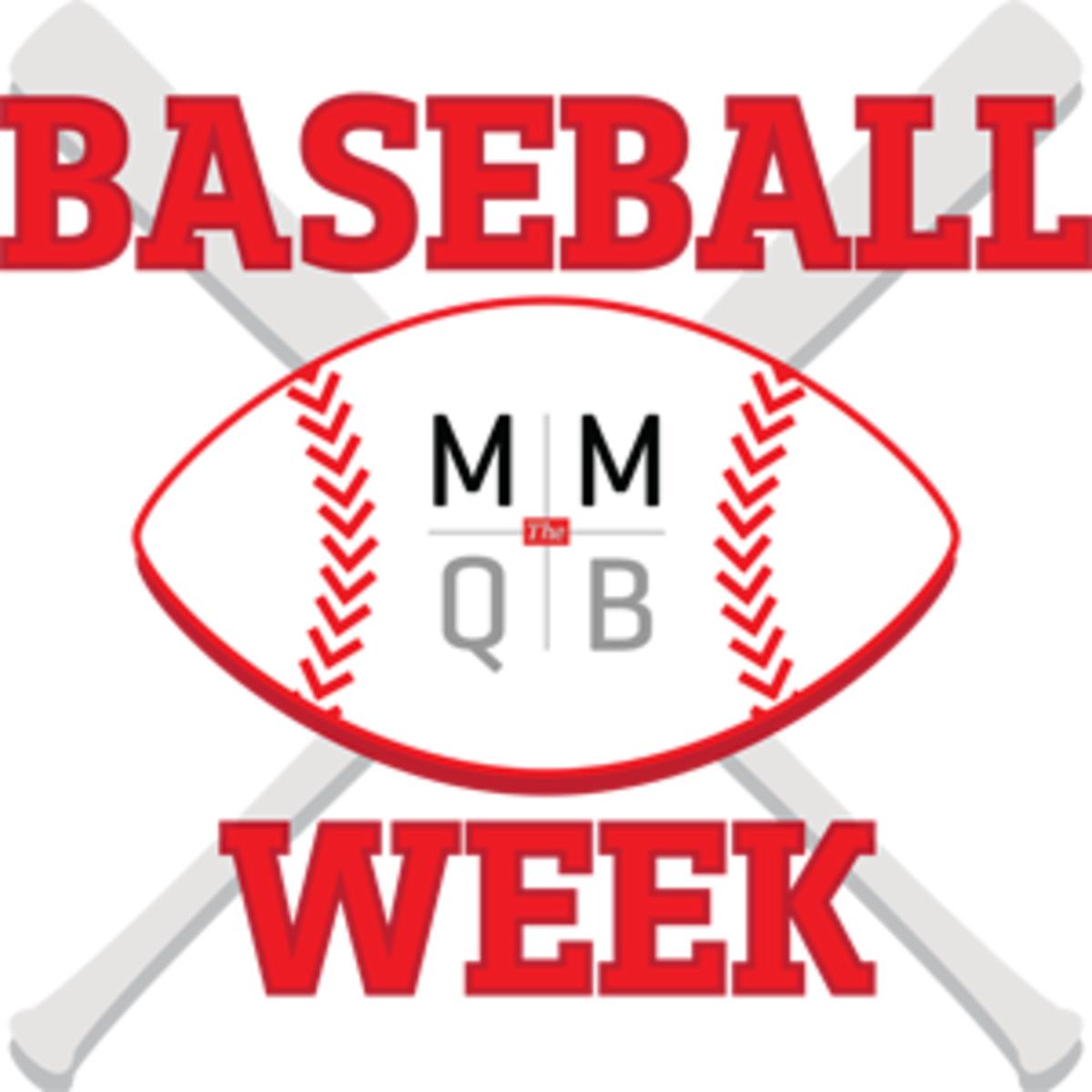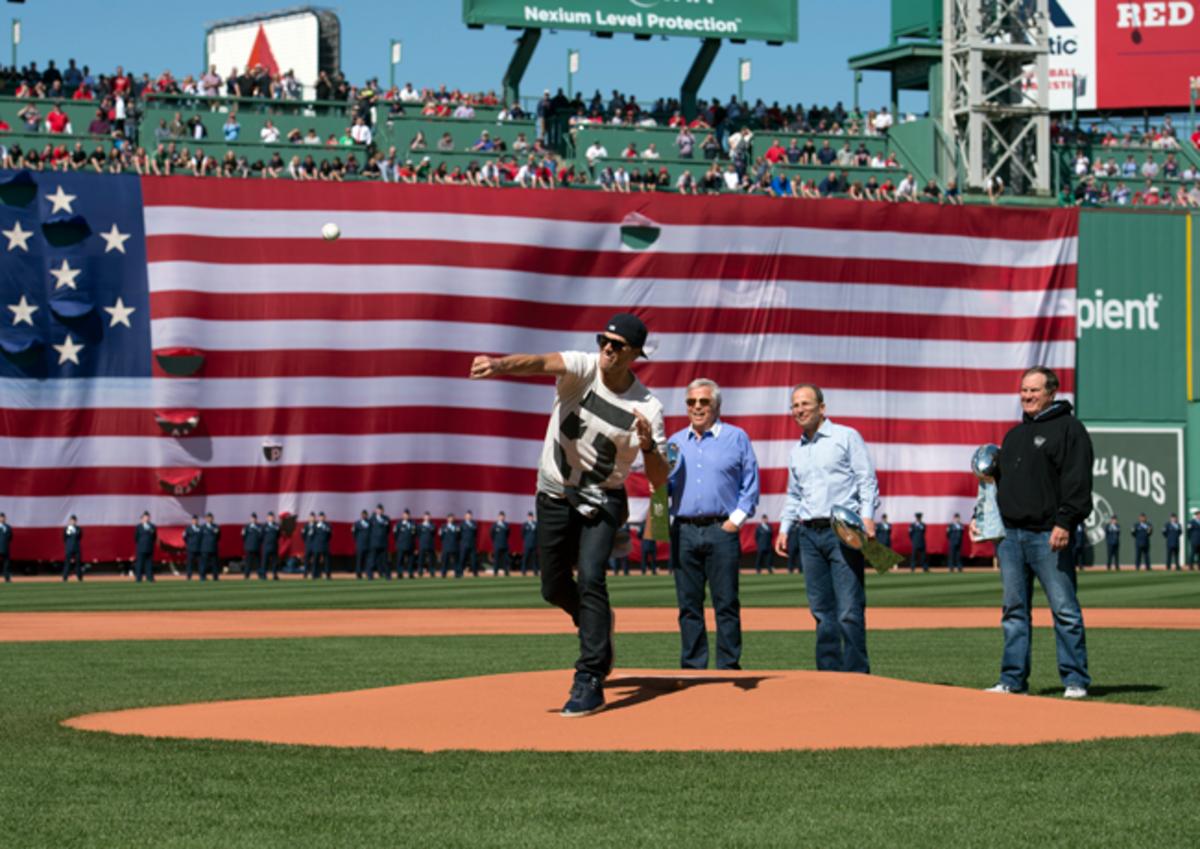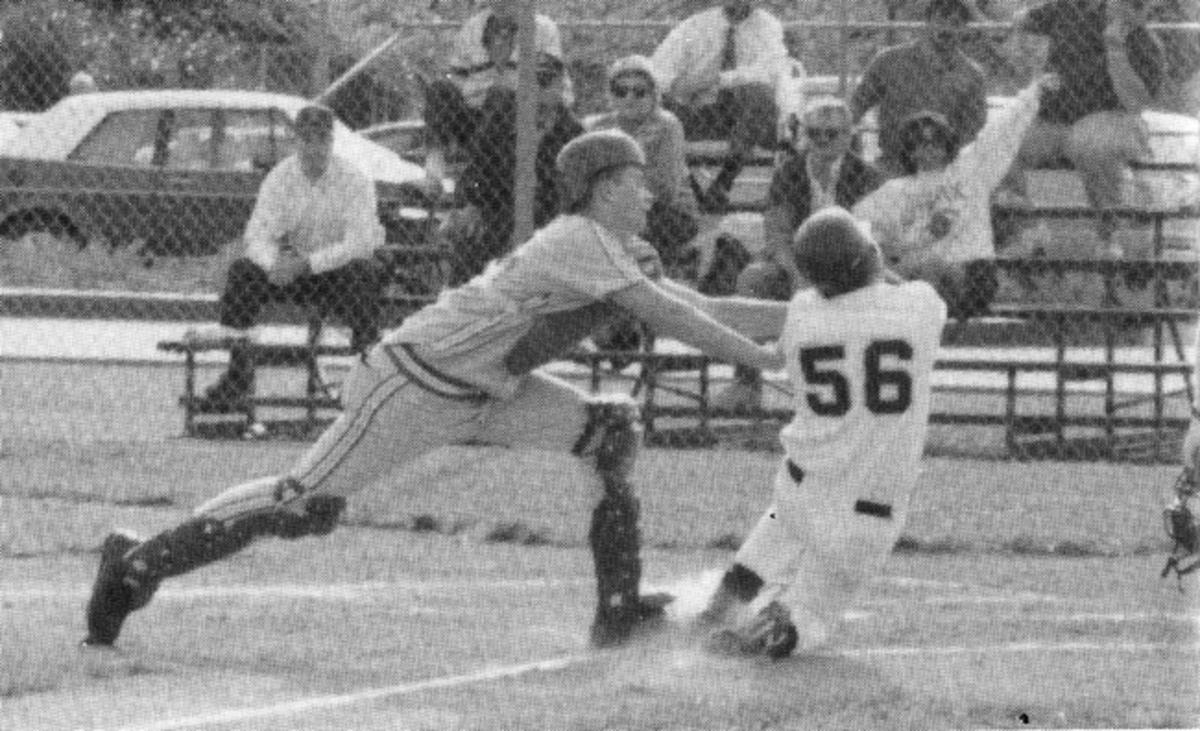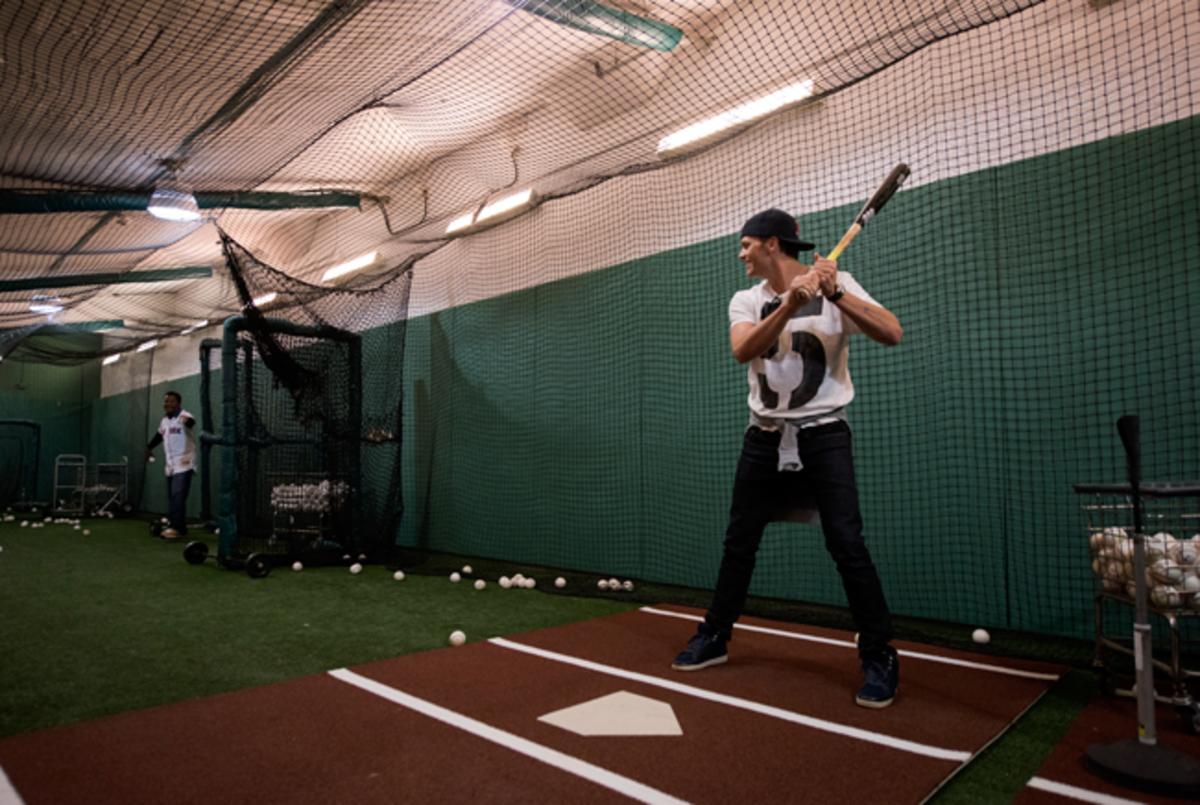That Time a 17-Year-Old Tom Brady Borrowed Ken Griffey Jr.’s Jersey

Welcome to Baseball Week. As training camp approaches and baseball takes a break for its mid-summer classic, The MMQB presents a week of stories on the crossover between hardball and football.
In the spring of 1995, with the MLB draft just around the corner, the Seattle Mariners invited two dozen or so prospects to work out at the Kingdome. The group included a mix of college and high school players, some big-time prospects and some long shots. Among them was a promising 17-year-old catcher from the Bay Area named Tom Brady.
The Mariners let the prospects change in the home clubhouse before the director of scouting ran them through drills on the field: the 60-yard dash, fielding exercises and batting practice. The prospects used wooden bats, just like the pros, and Brady even hit a few out of the park. “It was an incredible life experience,” Brady told The MMQB in an email interview.

But the real highlight of the day came during a quiet moment in the clubhouse, where Brady and Greg Millichap, his high school teammate who was also invited to the tryout, came upon Ken Griffey Jr.’s locker. Back then, Griffey was arguably the most popular player on the planet. He was The Kid, 25 years old and already a perennial All-Star. Nintendo had just put him on the cover of a video game. Thousands of kids around the country were turning their hats backward and imitating his sweet swing.
And there, in the locker, hung Ken Griffey Jr.’s jersey.
So Brady and Millichap took turns trying it on and checking themselves out in a mirror. On their flight home, Brady turned to Millichap and said, Can you believe we just did that?
“The jersey was cool,” Brady writes today. “Ken Griffey Jr. was the idol of all of us at that age.”
With the MLB draft fast approaching, Brady had some thinking to do. At Junipero Serra High School, in San Mateo, Calif., he was captain of the baseball team and the star quarterback. He had a scholarship to play football at Michigan in the fall, and it seemed likely that an MLB team would draft him. But he couldn’t take the baseball signing bonus money and play college football. By the end of the summer he’d have to choose.

* * *

Brady was a legitimate baseball prospect, in part, because of the position he played. He was a catcher who threw with his right hand but batted lefty—a skillset that has become increasingly rare in the modern game. Of the 60 or so starting and backup catchers in baseball today, only a handful of them bat left-handed. Think: Joe Mauer, A.J. Pierzynski, Brian McCann.
Brady had some power, too. He played two years of varsity baseball, 61 games in all, and he batted .311 and had eight home runs, 11 doubles, and 44 RBIs, according to press clippings. Pete Jensen, his high school coach, remembers Brady hitting one monster home run in a playoff game that struck the team bus—parked well beyond the right field fence—and waking the driver who was trying to take a nap.
“Scared the heck out of him,” Jensen says.
Behind the plate, Brady was just as adept. He chatted up umpires before games the same way he chats with referees now, presumably hoping that friendly conversation might influence close calls later in the game. Jensen let his catchers call their own games—a luxury many college coaches don’t afford their players—and Brady embraced the challenge. He would meet with pitchers before games and discuss strategy: how they were going to set up hitters and attack their weaknesses. Brady had played against a lot of these hitters in leagues growing up and knew their tendencies. “He had a book in his mind on these guys,” says Jon Chapman, Serra’s ace pitcher that year. “If I tried to shake him off, he’d throw down the same darn sign. It was like, OK, we’ll go with it. Tommy knows what he’s doing.”

If Chapman ever got into a jam, Brady knew when he needed to go out to the mound and offer a few choice words. “He’d feel out the situation and give me the advice I needed to get through the inning,” Chapman says. “I knew when he came out there, I better get it together, because he’s not coming out here to have a nice, little conversation . . .”
It helped that Brady could always extinguish a threat and catch a would-be stealer with a rocket throw. As you might imagine, he was accurate, too. Infielders rarely had to move far to apply tags. “His ball was very straight,” says Jon Vetter, the team’s shortstop. “It would always come in right on line. I didn’t have to jump or anything. It was always pretty easy [to catch].”
During his senior year, especially, Brady started receiving recognition for his baseball talents. His teammates voted him captain, he was named to the All-District team, and scouts flocked to Serra to see him play. Serra had a longstanding reputation of producing high-end baseball players, from Barry Bonds (class of ’82), to Jim Fregosi (class of ’59), and several others who had varying degrees of success but at least reached the majors. Serra’s reputation only helped Brady gain more exposure.
Brady was sitting at a locker, holding court with six or seven Expos asking him questions. “Why would you make $800 a month in the minor leagues when you can be the quarterback at the University of Michigan? Go play football at Michigan! Are you kidding me?”
One of the scouts who came was John Hughes, of the Montreal Expos. After watching Brady, Hughes wrote a report that caught the attention of the higher-ups back in Montreal. “[Brady] had a high ceiling,” recalls Kevin Malone, the Expos’ general manager at the time. “He was a left-handed, power-hitting catcher who was cerebral. He had arm strength. He had everything that would warrant him being projected as a major league all-star. He had everything.” The Expos sent at least one more scout to crosscheck Brady, and they soon reached a consensus that they wanted him.
But there was one issue: Brady had indicated that football was his true love and that he intended on attending Michigan in the fall. If that were the case, drafting him would be useless. Malone decided to take a chance anyway and picked Brady in the 18th round, No. 507 overall. Then it was up to Hughes, the scout, to convince Brady to become a baseball player.

A week after the draft, Hughes says, he arranged for Brady to workout with the Expos at Candlestick Park as the team passed through San Francisco. It’s common for teams to invite new draft picks to visit, but they usually only invite high picks. Brady received the full treatment. The Expos gave him his own jersey and had him meet one-on-one with Malone, the GM. They had him throw a little and take batting practice with the team.
Hughes told FP Santangelo, a 27-year-old outfielder, to watch after Brady and chaperone him for the day, because the Expos wanted to sign this guy. But once Santangelo heard that Brady was going to play quarterback at Michigan, it was all he could talk about. Santangelo’s mother had attended Michigan and he’d grown up in the state bleeding maize and blue. At one point, Santangelo took Brady around the clubhouse and introduced him to the guys, including Pedro Martinez, the ace, and Felipe Alou, the manager. “I didn’t even introduce him as, ‘He’s going to sign with the Expos,’ ” Santangelo says. “It was: ‘This is Tom Brady, he plays quarterback at Michigan.’ I do remember that [Brady] was very shy. He was saying, ‘I’m like fifth-string right now, who knows how that’s going to go.’ ”
Other players took an interest, too, and soon Brady was sitting at a locker, holding court with six or seven Expos asking him questions. “We were telling him,” Santangelo says, “ ‘Why would you make $800 a month in the minor leagues when you can be the quarterback at the University of Michigan? You’re a good-looking guy, you can probably have a lot of fun off the field, too.’ … We told him: ‘Go play football at Michigan! Are you kidding me?’ ”
Hughes eventually wandered into the clubhouse and overheard the conversation. Says Santangelo, “He was like, ‘Oh, God, I put him with the wrong guys.’ ”
Hughes didn’t give up that easily, though. He met with Tom Brady Sr. a few times that summer, at a pub in San Mateo. Tom Sr. would ask Hughes questions about the Expos, about professional baseball, and what the Expos envisioned his son’s path being. And Hughes would feel out Tom Sr. to see if there was any amount of money that would persuade his son to give up football. The Expos had authorized Hughes to offer Brady a contract much more lucrative than what an 18th-rounder typically made. It was “in the neighborhood of bottom of the second [round], top of the third type money,” Hughes says. “If we were going to offer him that type of money, we felt he was going to be a future big-leaguer.”
Hughes never made a formal offer, though. Brady stood firm in that he was playing football. “I knew pretty much all along that we were never going to sign him,” Hughes says, and with that, the Expos lost a strong-throwing, left-handed power-hitting catcher who, they say, had a chance to develop into a franchise cornerstone.
Some 10 years later, Hughes was at a friend’s house watching the Super Bowl—one of the three that Brady won in a span of four years, from 2001 to ’04—and the magnitude of what he’d done, or rather, had failed to do, dawned on him. “If I could’ve signed this guy, I would’ve changed the entire history of the NFL,” Hughes told his friends. “The NFL would’ve never been the same. Who would’ve known?”
Question? Comment? Story idea? Let us know at talkback@themmqb.com
